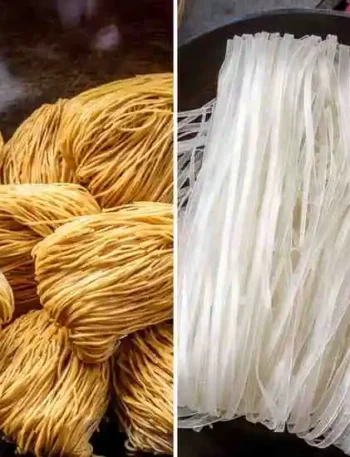Squash is an all-purpose veggie loved for its earthy sweetness and cooking versatility. Knowing how to tell when squash is bad is important. This includes summer squash, zucchini, and winter types like butternut and acorn. Fresh squash adds great flavor and nutrients. But bad squash can ruin meals and even lead to food poisoning.
In this guide, we will cover the signs of spoilage, storage tips, and how to extend freshness.
Contents
Fresh vs Spoiled Squash
Fresh squash should feel firm, vibrant, and blemish-free. Spoiled squash shows noticeable changes in texture, smell, and appearance.
Good Squash
- Firmness: Squeeze with a light pressure, and it should feel solid and dense.
- Skin: Smooth and vibrant with no soft spots or bruises.
- Stem: Intact, dry, and not shriveled.
- Smell: Mild, fresh, and earthy with no sour or rotten smell.
Bad Squash
- Soft spots: mushy or sunken areas.
- Wrinkling: Dehydration and age.
- Discolouration: Dark or dull patches on skin or flesh.
- Mould: White, grey, or black fuzzy spots.
- Odour: Sour, fermented, or foul smell.
Specific squash varieties and their spoilage signs
Different squash types spoil in various ways. This happens because of their skin thickness and how long they last in storage.
Summer Squash (Zucchini, Yellow Squash)
- Shelf life: 5–7 days in the fridge.
- Spoilage signs: watery texture, sliminess, wrinkled skin.
Winter Squash (Butternut, Acorn, Spaghetti)
- Shelf life: 1–3 months in a cool, dry pantry.
- Spoilage signs: hard skin turning soft, visible mold around the stem, musty smell.
Storage Tips to Keep Squash Fresh
Proper storage is key to extending the life of your squash.
For Summer Squash
- Store unwashed in a perforated plastic bag.
- Store in the crisper drawer of your fridge.
- Avoid airtight containers to prevent moisture buildup.
Store winter squash in a cool, dark, dry place (50–55°F).
- Keep away from direct sunlight and damp areas.
- Once cut, wrap tightly in plastic wrap or an airtight container and refrigerate.
How to Handle Cut or Cooked Squash
- Cut squash: Refrigerate in an airtight container and consume within 4–5 days.
- Cooked squash: Store in airtight containers; lasts 3–4 days in the fridge or up to 10 months when frozen.
- Freezing tips: Peel, cube and blanch squash before freezing for best results.
Food Safety Concerns
Bad squash is not just yucky—it’s harmful. Squash that develops a bitter taste may contain toxic compounds called cucurbitacins. These can cause stomach pain, vomiting and diarrhea. If squash tastes unusually bitter it should be discarded immediately.
How to revive slightly wilted squash
Not all squash that looks tired needs to be thrown out.
- For zucchini or yellow squash: soak in cold water for 15–20 minutes to restore some firmness.
- For winter squash: cut off small soft spots (if no mold) and cook immediately.
How to Tell If a Squash Is Bad
Squash is a versatile veggie loved for its earthy sweetness and culinary flexibility. Knowing how to tell when squash is bad is important. This applies to summer squash, zucchini, and winter types like butternut and acorn. Fresh squash boosts flavor and nutrition. But spoiled squash can ruin meals and may lead to food poisoning.
In this guide, we explain the signs of spoilage, storage tips, and how to extend freshness.
Fresh vs Spoiled Squash
Fresh squash should feel firm, vibrant, and blemish-free. Spoiled squash shows noticeable changes in texture, smell, and appearance.
Good Squash
- Firmness: Squeeze gently, and it should feel solid and dense.
- Skin: Smooth and vibrant with no soft spots or bruises.
- Stem: Intact, dry, and not shrivelled.
- Smell: Mild, fresh, and earthy with no sour or rotten smell.
Bad Squash
- Soft Spots: Mushy or sunken areas.
- Wrinkling: Dehydration and age.
- Discoloration: Dark or dull patches on skin or flesh.
- Mold: White, gray or black fuzzy spots.
- Odor: Sour, fermented or foul smell.
Specific squash varieties and their spoilage signs
Different types of squash spoil in various ways. This depends on their skin thickness and how long they last in storage.
Summer squash (zucchini, yellow squash)
- Shelf life: 5–7 days in the fridge.
- Spoilage signs: watery texture, sliminess, wrinkled skin.
Winter squash (butternut, acorn, spaghetti)
- Shelf life: 1–3 months in a cool, dry pantry.
- Spoilage signs: hard skin turning soft, visible mold around stem, musty smell.
Storage tips to keep squash fresh
Proper storage is key to extending the life of your squash.
For summer squash
- Keep unwashed in a perforated plastic bag.
- Store in the crisper drawer of your fridge.
- Avoid airtight containers to prevent moisture build-up.
For storing winter squash in a cool, dark, dry place (50–55°F).
- Keep out of direct sunlight and damp places. Wrap the food in plastic wrap without gaps or place it in an airtight container after cutting. Then, refrigerate.
Cut or Cooked Squash
- Cut squash: Refrigerate in an airtight container and use within 4–5 days.
- Cooked squash: Store in airtight containers; 3–4 days in the fridge or up to 10 months when frozen.
- Freezing tips: Peel, cube and blanch squash before freezing for best results.
Food Safety
Spoiled squash is not just yucky—it’s harmful. Squash that develops a bitter taste may contain toxic compounds called cucurbitacins. These can cause stomach pain, vomiting, and diarrhoea. If squash tastes bitter, throw it out right away.
How to revive wilted squash.
Not everyone needs to toss all the wilted squash.
- For zucchini or yellow squash: Soak in cold water for 15–20 minutes to firm them up.
- For winter squash: Cut off small soft spots (if there is no mould) and cook immediately.
Shelf Life
- Buy squash with stems intact and firm skin.
- Don’t buy squash with blemishes at the store; they spoil faster.
- Keep winter squash away from apples, bananas, and tomatoes. They release ethylene gas, which speeds up ripening.
Conclusion
Knowing the signs of bad squash means safety and flavor in your meals. Fresh squash is firm, bright, and has a mild scent. Bad squash is soft, wrinkled, discolored, or smells foul. With proper storage and handling, squash can last from days to months, depending on the type.
Choose wisely, store correctly, and know when to toss, and you’ll get the best of this healthy veggie.







